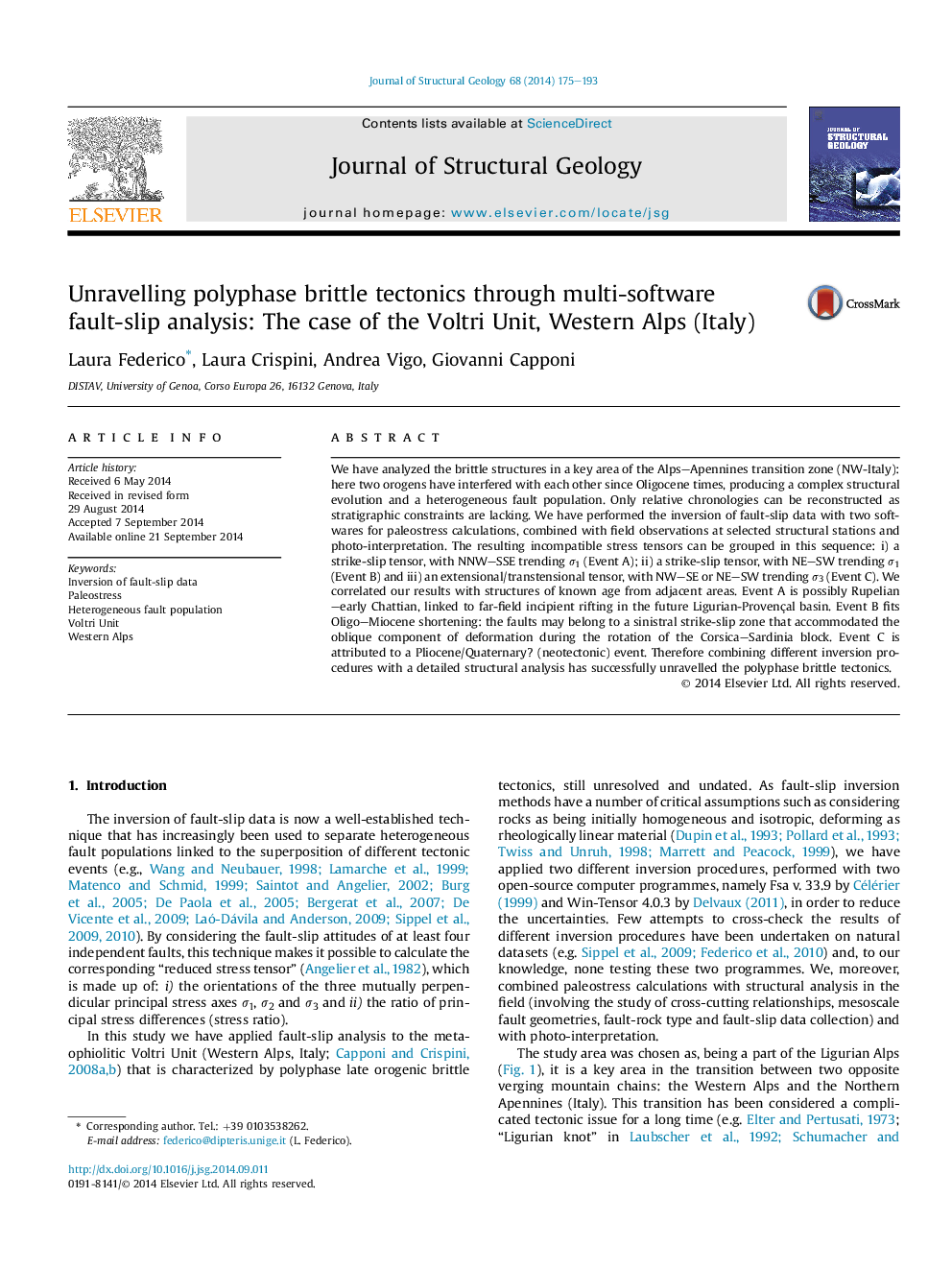| Article ID | Journal | Published Year | Pages | File Type |
|---|---|---|---|---|
| 4733081 | Journal of Structural Geology | 2014 | 19 Pages |
•We investigate the brittle architecture in the NW Voltri Unit (Ligurian Alps).•We perform fault-slip inversion of heterogeneous fault populations.•Three superposed local stress fields are detected.•A regional interpretation of Cenozoic tectonic events is presented.
We have analyzed the brittle structures in a key area of the Alps–Apennines transition zone (NW-Italy): here two orogens have interfered with each other since Oligocene times, producing a complex structural evolution and a heterogeneous fault population. Only relative chronologies can be reconstructed as stratigraphic constraints are lacking. We have performed the inversion of fault-slip data with two softwares for paleostress calculations, combined with field observations at selected structural stations and photo-interpretation. The resulting incompatible stress tensors can be grouped in this sequence: i) a strike-slip tensor, with NNW–SSE trending σ1 (Event A); ii) a strike-slip tensor, with NE–SW trending σ1 (Event B) and iii) an extensional/transtensional tensor, with NW–SE or NE–SW trending σ3 (Event C). We correlated our results with structures of known age from adjacent areas. Event A is possibly Rupelian–early Chattian, linked to far-field incipient rifting in the future Ligurian-Provençal basin. Event B fits Oligo–Miocene shortening: the faults may belong to a sinistral strike-slip zone that accommodated the oblique component of deformation during the rotation of the Corsica–Sardinia block. Event C is attributed to a Pliocene/Quaternary? (neotectonic) event. Therefore combining different inversion procedures with a detailed structural analysis has successfully unravelled the polyphase brittle tectonics.
